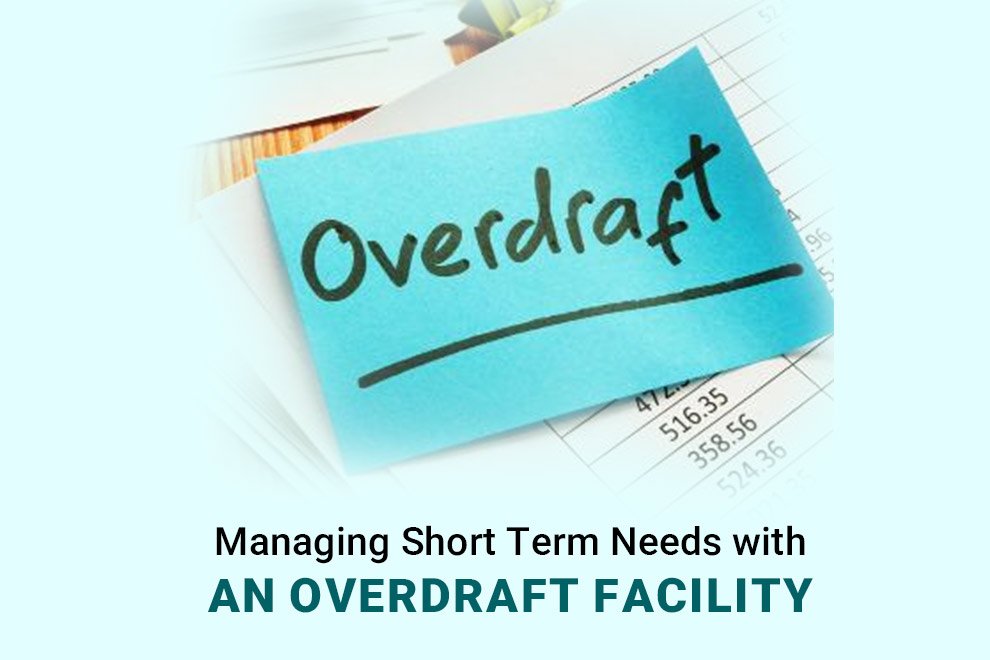Running a business often means riding waves of unpredictability. One month, you’re managing surplus cash flow; the next, you’re scrambling to cover a supplier payment. Sound familiar? If you’re a business owner, you’re already aware of the importance of having financial flexibility.
That’s where an overdraft facility comes in, a smart financial buffer designed to help you bridge the gap between payments, collections, and operational needs. Unlike traditional loans, it’s dynamic, adaptable, and often just what you need when cash gets tight.
Let’s break down how this facility works and why it could be the support for your short-term needs.
What Exactly is an Overdraft Facility?
An overdraft facility allows you to withdraw funds from your account even when your balance is zero or insufficient, up to a pre-approved limit. Think of it as a safety net to fall back on. You borrow only when required and pay interest only on the amount utilised, not the full sanctioned limit.
This makes it different from term loans, which typically require fixed repayments irrespective of your usage. For small businesses and self-employed individuals, that flexibility can be a game-changer.
Overdrafts can be secured (against assets) or unsecured, with the secured variant generally offering lower interest rates.
Types of Overdraft Facilities Available
Banks offers a variety of overdraft options, tailored to suit different asset classes. These include:
- Overdraft Against Property: Get funds against the value of your owned property.
- Overdraft Against Mutual Funds or Shares: Ideal for investors looking to leverage their portfolios.
- Overdraft Against Term Deposits: Use your fixed deposits as collateral while still earning interest on them.
- Overdraft for Current Account Holders: Especially useful for small to medium-sized enterprises (SMEs) with established banking relationships.
Each option is designed to serve a specific financial profile.
Smart Ways to Use an Overdraft Facility
Short-term needs can arise when you least expect them, such as a sudden inventory requirement, an unexpected vendor payment, or temporary cash flow gaps. Here’s how an overdraft facility can help you address those situations effectively:
- Emergency Repairs: Handle unplanned equipment breakdowns without affecting routine operations.
- Bridging Client Payments: Cover costs while waiting on milestone-based or delayed payments.
- Temporary Working Capital: Maintain payroll and pay off utilities during slow business cycles.
Why SMEs Benefit Most from Overdraft Flexibility
Small and medium-sized enterprises (SMEs) are particularly vulnerable to cash flow issues. Payments may be delayed, yet staff salaries and utility bills remain constant. In such cases, an overdraft facility helps maintain business continuity.
Here’s how an overdraft can help your SME:
- Smooths Cash Flow: Covers short-term liabilities without waiting for receivables.
- No Fixed Repayment: Repay at your convenience within the validity period.
- Interest on Usage: Only pay interest on the amount drawn, not the total limit.
- Quick Access: Funds are instantly available up to your limit when you need them.
Whether it’s a vendor payment or a seasonal purchase requirement, this facility acts like a responsive business partner.
Differences between Overdraft Facilities and Credit Lines
Many SMEs confuse overdraft facilities with credit lines, but the two serve different purposes. Credit lines often come with more paperwork and longer processing times. An overdraft facility is typically faster, especially when backed by assets such as property or fixed deposits (FDs).
While credit lines may offer higher limits, overdrafts provide flexibility in repayment. You can pay back the amount at any time during the facility tenure, making it a preferred choice for businesses with fluctuating cash flow.
Cost-effectiveness and Risk Management
When compared to other short-term borrowing options, overdrafts often come out on top. Since interest is calculated only on the amount used, businesses save significantly when usage is low or occasional.
Moreover, the risks are lower for SMEs as most overdrafts can be tailored to their specific needs. With better planning and documentation, the facility offers a high return in terms of convenience and flexibility. Here are some tips to manage your overdraft facility efficiently:
- Monitor Usage Regularly: Don’t let the convenience lead to careless borrowing.
- Stick to a Repayment Plan: Even though you don’t have EMIs, set internal targets to clear dues.
- Use for Business Needs Only: Avoid dipping into it for non-essential expenses.
- Review Facility Terms Annually: Check if your sanctioned limit needs adjustment based on business performance.
By practising disciplined use, SMEs can turn the overdraft facility into a long-term financial ally.
When Should You Consider an Overdraft Facility for Short-term Needs?
The beauty of an overdraft facility lies in its adaptability to a range of short-term financial needs, not just for SMEs, but also for professionals, traders, or anyone with temporary cash flow mismatches.
Here are some situations where applying for an overdraft facility could make financial sense:
- Launching new projects or product lines where returns are expected after a delay.
- Bridging gaps in collections, especially if you’re in a business where receivables take time.
- Handling seasonal lulls that affect your revenue but not your expenses.
- Urgent business investments, like minor equipment upgrades or stock purchases.
- Managing fixed costs like rent, payroll, and utilities during off-peak periods.
Applying before you hit a cash crunch ensures you’re covered when unexpected costs arise.
A Practical Choice for Short-term Financial Flexibility
When it comes to handling short-term financial gaps, speed and flexibility matter. Whether it’s covering a sudden expense, bridging delayed payments, or preparing for a seasonal rush, having access to funds at the right time can ease the pressure.
An overdraft facility can help you manage these moments with confidence. Since it lets you borrow only what you need and pay interest only on that amount, it’s a practical tool for quick, short-term support. Financial Institutions like HDFC Bank offer overdraft options backed by your existing assets. It’s not just another loan, it’s a smart, flexible way to stay financially steady when things get unpredictable.
Also read; The Role of Question Banks in Enhancing Class 10 Exam Preparation










